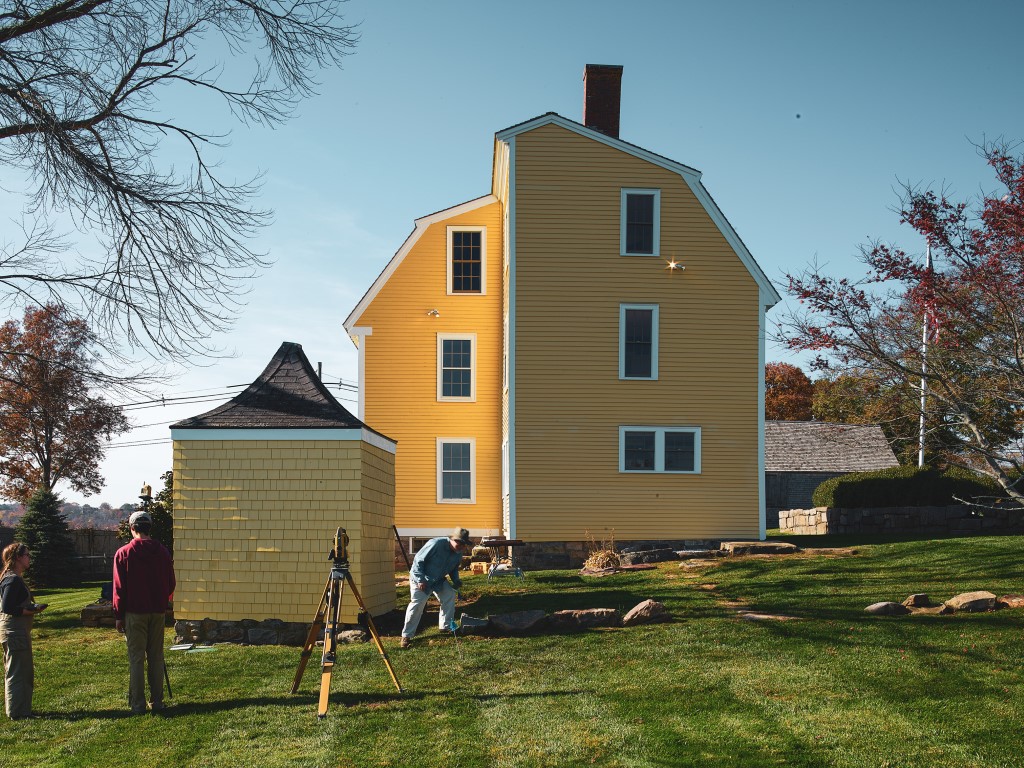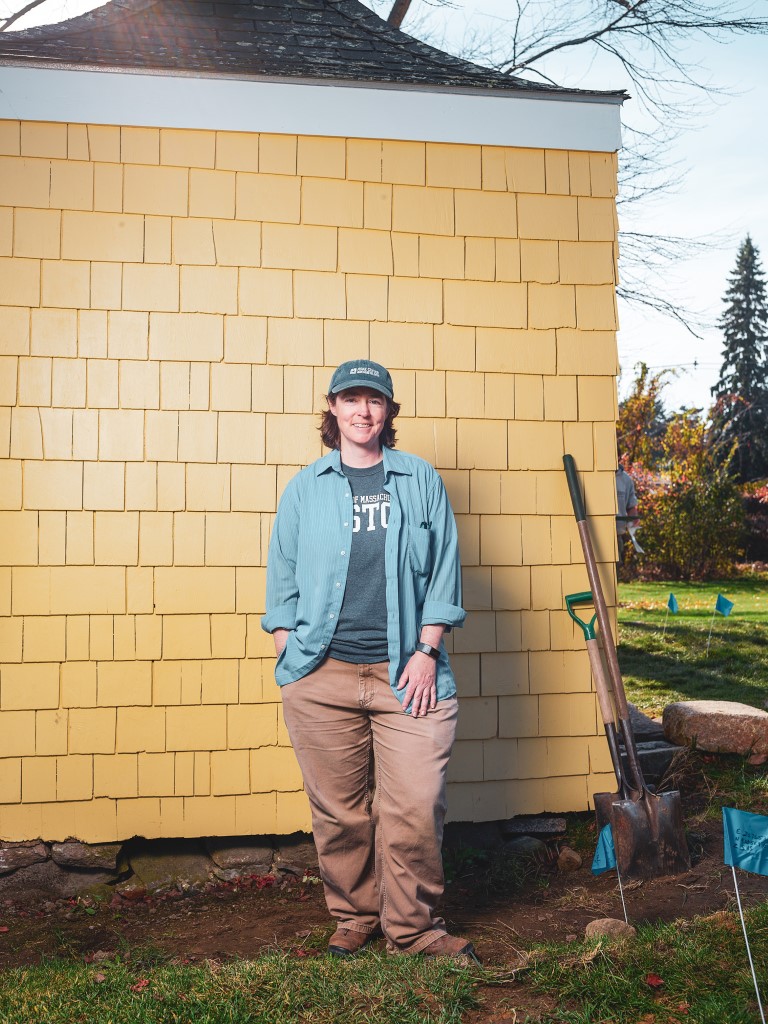For the past couple of years, a volunteer at the Cape Ann Museum’s satellite campus would notice something interesting every time it rained: As she walked along the part of the property near the historic Babson-Alling House, she often found small items in the mud. She picked up an old metal shoe buckle, a miniature ceramic doll, shards of pottery and glassware.
“That let us know there were things of interest here,” museum director Oliver Barker says.
Intrigued, the museum contacted the Fiske Center for Archaeological Research at the University of Massachusetts Boston, and arranged for historical archaeologist Christa Beranek and a group of her students to come investigate further. The result was a six-day dig on the property in late October, during which the public was invited to come watch the team’s progress, ask questions, and learn more about the property alongside the visiting archaeologists.

The target of the dig was an outbuilding located next to the historic home, which was built in 1740 in the same spot it stands today, on one corner of the Cape Ann Museum Green. A painting of the property by local artist Fitzy Henry Lane shows the small structure — likely a privy — had been added in its current location by 1863. Questions, however remained: Was the building always in the same spot? What was done with it when the home got indoor plumbing in the early 20th century?
The museum acquired the house in 2019, and has been working to stabilize the main building and the outbuilding. The results of the investigation will help guide the museum’s efforts to create interpretative materials telling visitors about the house and property.
“This is one part of the story we didn’t know much about,” Barker says.



During the dig, Beranek and her team excavated the ground in the outhouse in careful layers, quickly determining that the site had been used as a sort of dumping ground after the bathrooms moved indoors. They hauled out buckets of soil to be loaded onto large screens through which they sifted out the dirt leaving behind any tiny artifacts. Larger pieces—two fragments of a blue-and-white mug, small glass bottles—they plucked from the ground by hand, lining them up on the door jamb of the building for visitors to view.
The team also dug several smaller holes around the building as “test units” to learn more about the surrounding landscape. By the second day of work on the site the crew had already found some ceramic pieces that could date back to the 18th or 19th centuries, Beranek says. Asked how deep they would dig, she laughs, “To the bottom,” then explains the goal is to reach glacial subsoil that contains no indication of previous human activity.
As they dug, Beranek sent some photos back to a colleague back at the university to get some preliminary ideas about the age of the pieces they were finding. All of the artifacts were eventually destined to go back to the school for much closer study and analysis.
“This is going to create a ton of lab work,” Beranek laughs, gesturing toward seven plastic bags already filled with pieces and fragments on the first full day of digging. “This is a shockingly dense deposit.”

Beyond offering fascinating information about the site, the dig helped the museum engage the public with the Cape Ann Museum Green campus. Opened in 2020, The property includes a new building containing both exhibition space and storage facilities, as well as spacious lawn, outdoor sculptures, and two historic homes. In October, the museum closed its main building in downtown Gloucester until spring of 2026 for renovations. In the meantime, the museum is shifting programming to its satellite campus.
“We’ve been wanting to draw people’s attention to the existence of this campus,” Barker says. “It’s going to force us, in the best possible way, to make the most of this site.”
Beranek was scheduled to present preliminary findings from the dig at the museum green campus on November 23. Looking ahead, the items found during the process could one day feature in a museum exhibit, Barker says, and further archaeological work on the site is always possible.
“This is important work that will help us better understand the lives of the people who lived here,” he says.

